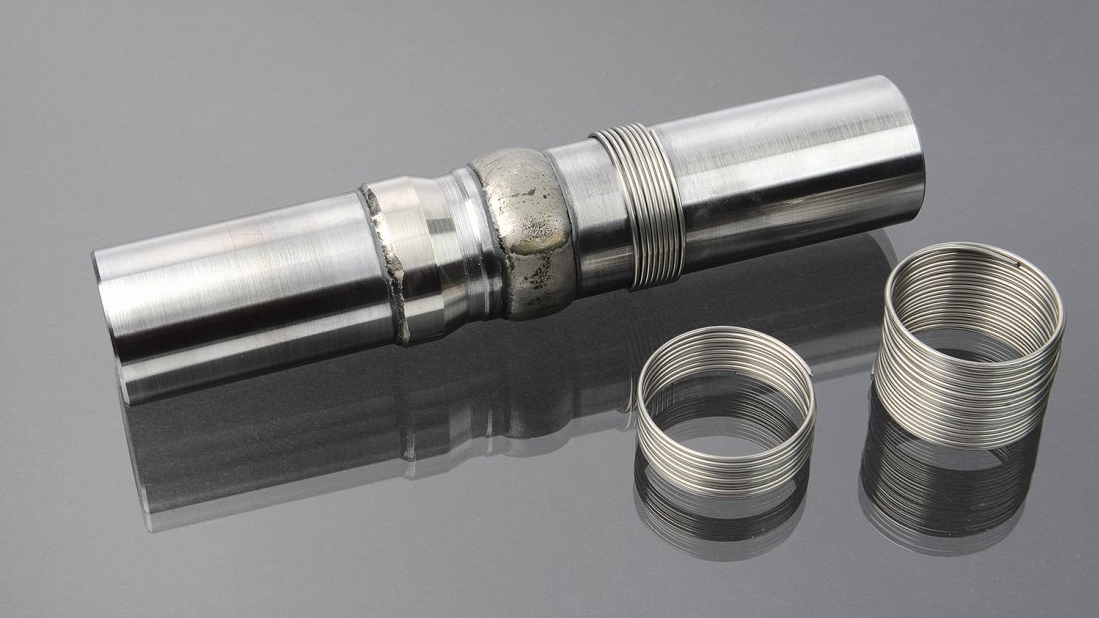As power and torque transmitters, shafts are irreplaceable components of cars, airplanes, ships and wind turbines. A team from the Fraunhofer Institute for Production Technology IPT has now developed the additive process "Express Wire Coil Cladding" (EW2C for short) for the surface treatment of shafts. It offers a resource-saving and cost-effective alternative to conventional ablative shaft machining processes such as turning.
Express Wire Coil Cladding is a wire-based additive manufacturing process in which a component or structure is built up with a laser by joining metallic materials layer by layer. In contrast to classic laser cladding, the material is not fed continuously as a wire, but is instead pushed to the desired points on the shaft in the form of spirals and welded on there using a high-power laser. As the wire spirals are placed on the shaft under tension, they cannot slip during the laser process, which increases the process stability by a factor of ten compared to conventional wire-based laser cladding.


